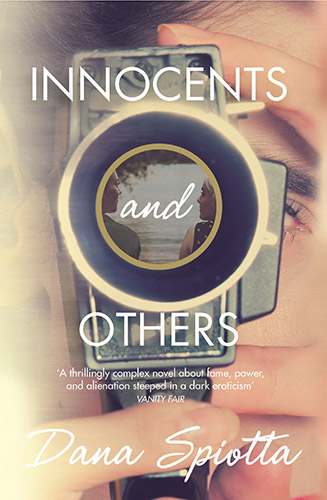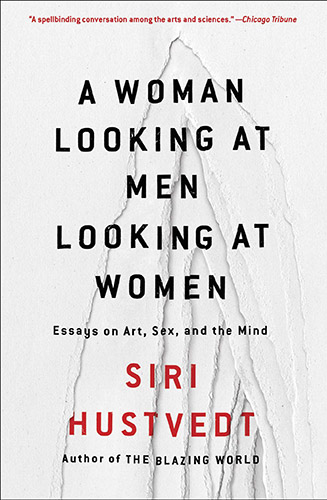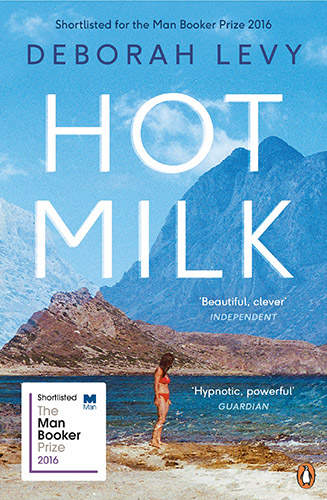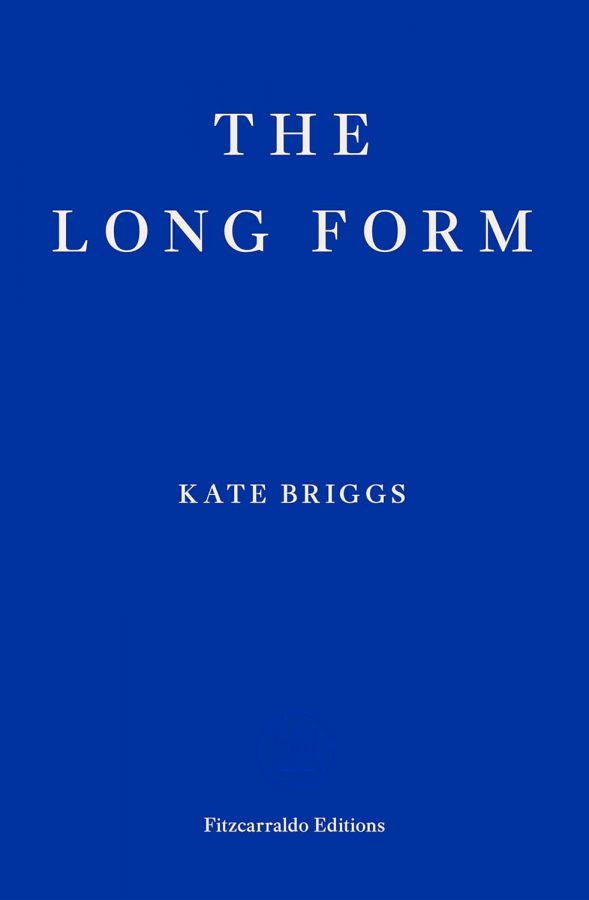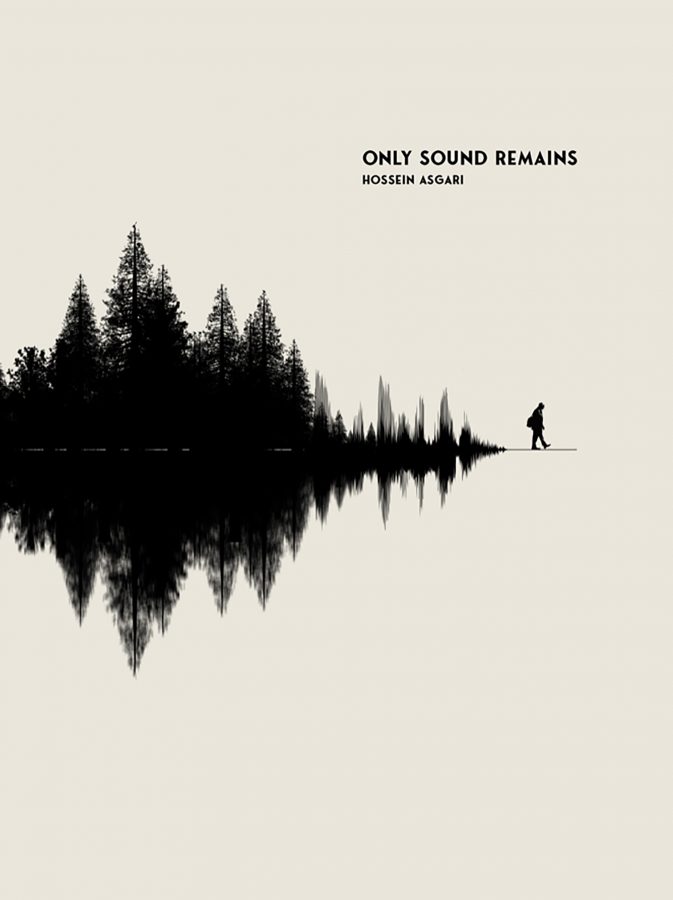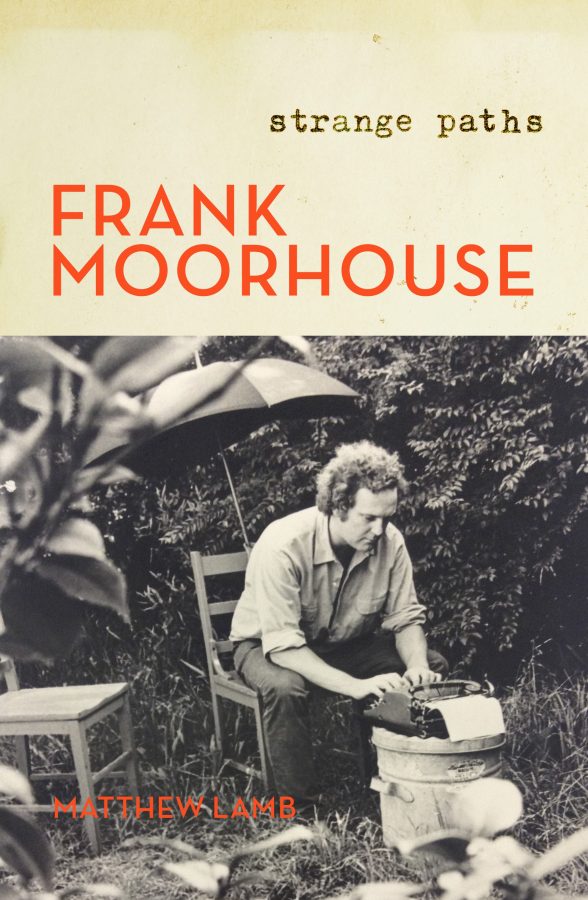Long Looks and Serious Games: on Deborah Levy, Siri Hustvedt and Dana Spiotta
I learn a way of looking at the world that is far more accurate, complex, multi-layered,
multi-dimensional, more truthful: to see the world of overlapping circles, like movement on a millpond after a fish has jumped.Minnie Bruce Pratt
Minnie Bruce Pratt’s vision for looking at the world is one that encapsulates the complexity and playfulness of the three writers addressed in this essay: Siri Hustvedt, Deborah Levy and Dana Spiotta. Siri Hustvedt’s newest collection of essays, A Woman Looking at Men Looking at Women: Essays on Art, Sex, and the Mind (2016), Deborah Levy’s novel Hot Milk (2016) and Dana Spiotta’s Innocents and Others: A Novel (2016) —all address a question that one of Spiotta’s characters asks of herself; ‘why is it so different for women?’
Hustvedt writes in her essay ‘Suicide and the Drama of Self-Consciousness’, ‘The most terrible thing of all is to live unrecognized, to feel invisible among others. Invisibility can quickly come to feel like annihilation.’ The truth of this statement reverberates for us all. For women, society’s essentially male gaze, amplified by an endless stream of images, advertising and works of art, can be a source of alienation and a form of annihilation. In these works Hustvedt, Levy and Spiotta look at and write, the world and women in forms that are multitudinous, and in doing so, they allow us to recognise ourselves.
My Siri Hustvedt and I
In the first section of the arresting A Woman Looking at Men Looking at Women sits an unexpectedly affecting essay, ‘My Louise Bourgeois’ in which Hustvedt explores the process of absorption that a perceiver of art might undergo. As always, she is careful to attribute any ideas that have influenced her to their originators, a sign of her generous spirit. In this instance, the source is Susan Howe’s My Emily Dickinson and Howe’s proposition that the Dickinson she is writing about is a particular hybrid of her own embodiment. In a sense, her own creation. And so Hustvedt does the same to Bourgeois.
Throughout the essay we feel the late French artist as a magnetic presence. For readers of Hustvedt’s 2014 novel The Blazing World, there is much that reverberates, for the hero of that novel, Harriet Burden is an amalgam of many persons – including the indefatigable and awe-inspiring Bourgeois. Here, she writes,
My Louise Bourgeois is not what I make of her words, not just my own analyses of their sinuous, burgeoning meanings, but rather the Louise Bourgeois who is now part of my bodily self in memory, both conscious and unconscious, who in turn has mutated into forms of my own work, part of the strange transference that takes place between artists.
Thus is Bourgeois embodied. It is this mysterious crossroads between body and sensations, science and art that Hustvedt is intent on uncovering. For me, reading the collection in its entirety became an opportunity to spend weeks in the company of a writer whose prose arrested me over a decade ago in the novel What I Loved (2003). Flights of fancy and strange truths, burning poeticism and stillness, and a consistent willingness to demonstrate the writer’s searing intelligence. This was the first iteration of My Siri Hustvedt.
A Woman Looking At Men Looking at Women is the work of an artist who has spent decades grappling with the way the self is made and remade, in an admiringly non-narcissistic manner. The writer looks inwards and outwards, engaging with surfaces but not always convinced by what she sees; sometimes we find her looking sideways or underneath in acts of excavation. What lies ‘beneath’ is a concept that resides as a recurring motif in Hustvedt’s work, as she writes in ‘The Delusions of Certainty’,
Doubt is not only a virtue in intelligence; it is a necessity. Not a single idea or work of art could be generated without it, and although it is often uncomfortable, it is also exciting. And it is the well-articulated doubt, after all, that is forever coming along to topple the delusions of certainty.
After spending this prolonged period of time in Hustvedt’s company, I feel another layer of her cross the soluble boundaries of consciousness and enter my own morphing self. My Siri Hustvedt is made more flesh.
There is something potent in this loop of watching. I enjoy witnessing Hustvedt looking at women (Bourgeois, Susan Sontag and others) or men (Pablo Picasso, Willem de Kooning and more) who are doing the same. She has a history of addressing ways of looking, those that happen between people and those directed by receivers of art (see Mysteries of the Rectangle: Essays on Painting, 2005). Her mesmerising 1992 debut novel The Blindfold makes effective use of the uncanny. Its female protagonist finds that her gender becomes malleable after a photographer takes a transgressive image of her.
Years later, in the title essay of A Plea for Eros (2006), Hustvedt returns to this subject of looking at women. Addressing a new Minnesotan law ‘against staring’ that had been passed at the time of writing the essay—a misguided attempt to prevent sexual harassment—she writes, ‘Ogling should be legal. Looking is part of love, but what you see when you look is anybody’s guess.’ She develops this further telling stories both of being the ogler and the oglee, the latter being the more disconcerting. What one might consider to be established ground, with most consideration directed at the person at the end of these uncomfortable looks, ends up shifting. There is no less sympathy for the obsessed, seemingly unhinged teenage boy, a student of hers, than for her own teenage enamoured self.
This approach continues in A Woman Looking at Men. She tells us in the title essay that de Kooning’s Woman II ‘looks good sideways, if not upside down’. I would not be surprised to hear that the writer stood on her head to make sure this is the truth. But then I would also not be surprised to hear that the museum director allowed her to view the painting in this state. Her willingness to engage is seductive, even as the reader grapples with the challenging concepts Hustvedt considers.
‘A Woman Looking at Men Looking at Women’ is an essay initially written for a catalogue on a Picasso, Max Beckmann and de Kooning exhibition. In it Hustvedt turns de Kooning’s fearsome painting into something less, or more, than its initial leering image. At first glance, there is a violence that erupts in her writing, ‘a grinning mouth … slashed from the rest of her face’. The violence is doubly present; Woman II somehow enacts violence through her eruptive sexuality as violence has been done to her by the artist in that act of slashing. But then Hustvedt’s gaze transforms the work or, more precisely, she finds another being to be present. She is at once conscious of how it feels to be looked at and aware of the historical propensity for male artists to cast women as objects. Thus the writer finds her subject. It is emancipatory for her as viewer, for us as reader and for Woman II herself. For what Hustvedt finds is an agent,
a wild woman who won’t keep still. After I have looked at her for a while, I am less afraid. She becomes more comic … She is a sexed-up charged-up, big-bodied, carnival woman.
Knowing only comes with intimacy, with the long look, with the full sensory opening of oneself. These long looks are the antithesis of ogling, which pins the subject to the same fate as Nabokov did his butterflies, allowing for no reciprocity. It is not the original Woman II that remains, but an anarchic agent who is far less repulsive than originally thought and certainly more joyful.
To what degree do we conventionalise the images in front of us because we see the patterns we expect to see? How much do we miss?
Hustvedt does not miss much. Part of this has to do with her refusal to engage lightly with the world. She is not a speedy consumer of art or ideas. Her looks are slow, contemplative and absorbing.
But with paintings, when you look hard and keep looking, every once in a while you may begin to suffer a feeling of vertigo, and that is a sign that the world may be turning upside down.
Hustvedt engages in this particular form of looking in her fiction and her non-fiction. Both What I Loved and The Blazing World are firmly embedded in the artistic landscape where artists are playing with form, endeavouring to reflect sharper truths about the world. Genderbending, chimerical, these are qualities embedded in My Siri Hustvedt’s writing. Not a trivial pleasure, for this is the very stuff of lived experience, ‘Fiction is not an escape from the world … Imaginary experience is also experience.’
‘Every writer is pregnant with others.’ My Siri Hustvedt is fecund with thinkers that bridge fiction and philosophy. A favourite of hers is Margaret Cavendish, the seventeenth-century philosopher, scientist and writer also beloved of Harriet Burden, but so too is Søren Kierkegaard, Maurice Merleau-Ponty, Julia Kristeva. My Siri Hustvedt is a modern renaissance woman of literature, science and ideas who lectures in psychiatry at New York’s Weill Cornell Medical School. And yet in the essay ‘No Competition’ she tells of the recurring assumptions made by others regarding her work and gender limitations. A reader asks whether her husband Paul Auster wrote the character of Bruno Kleinfeld in A Blazing World, a journalist insists that she learned ‘psychoanalysis and neuroscience’ from Auster when the opposite is true, a ‘grand old man of French publishing’ patronises her, encouraging her to continue writing as if she needed his permission.
I witnessed this too, on a memorable day when I met my literary deity. Hustvedt and Auster were being interviewed by an eminent Australian critic in a Melbourne bookstore. Auster was rather aloof, channelling his name as he signed his books. Hustvedt, on noticing the many dog ears present in my copy of A Plea for Eros and the adored What I Loved amongst the rest, engaged me in conversation despite the considerable queue behind me. She signed A Plea for Eros, ‘For a like-minded comrade’. I include this not as a badge of honour (although telling the story still delights me) but to explain that this experience has fed my version of Hustvedt. Exceedingly generous, open to the world, forever engaging, sensitive to the point of pain.
During the conversation, the critic wished to demarcate the’ writing of the spouses. Whilst Auster was relegated to the realms of poetry and high art, the wife was conferred the territory of, amongst other things, the ‘domestic’ novel. At this absurd distinction, I felt a rage burn within and saw Hustvedt’s articulate response expressed this very same sensation even as it was communicated in a manner that carried traces of ice. Later I think of this version of her as I read and reread Harriet Burden’s disclosure:
I wanted to fly, you see, and breathe fire. Those were my dearest wishes, but it was forbidden, or I felt it was forbidden. It has taken me a very long time, a very long time to give myself permission to fly and breathe fire.
Deborah Levy writes in Things I Don’t Want to Know (2013):
A female writer cannot afford to feel her life too clearly. If she does, she will write in a rage when she should write calmly.
This last phrase incorporates a quote of Virginia Woolf’s. Like Levy, Hustvedt is able to write through rage into liberating spaces. As Hélène Cixous articulated in The Laugh of the Medusa, ‘We know how to speak them all.’ I like to think that part of My Siri Hustvedt is the woman who looked hard into the eye of that Melbourne critic and all his fellows she wrote the essays that comprise this collection. Under her uncomfortable gaze they are diminished and she looms large, deflecting classification or diminution.
Modern Medusas
Deborah Levy’s work often interrogates and complicates the ways in which we see the world. Her most recent work, Hot Milk was shortlisted for the Man Booker Prize. This novel encompasses themes of female ways of being in the world, mother and daughter relationships, gender and sexual fluidity and European austerity. The action plays out in a small town in southern Spain. English woman Sofia Papastergiadis accompanies her mother, hoping to find a cure for Rose’s numerous mysterious ailments which include sometimes experiencing a lack of sensation in her feet. It is a secular pilgrimage, in search of a miracle. And so they remortgage Rose’s house to fund a visit to the prohibitively expensive Gómez Clinic.
Women’s bodies and their myriad states of being are encountered in Hot Milk: ripe, fecund, withering, lame, denied of purpose, maternal, muscular, filled with the heat of desire. There they are, full frontal, in our gaze. A woman in a market stall selling straw hats becomes a distraction for Sofia, as the price tag swings ‘across her eyes. It was as if she had put something in the way of being looked at.’ Sofia understands this inclination to hide. At times she is canny, cognisant of the power of the gaze and what might be gleaned from studying humans. After all, she was made to abandon a PhD in anthropology to help her ailing mother. But she is also strangely detached from her physical self. On two occasions, Sofia is oblivious to the fact that she is partially undressed, an unsettling sign of her disengagement from her physical self and desires. From taking on her mother’s limp to her slavish servicing of her mother’s needs, Sofia has surrendered her body’s autonomy together with her agency. Thankfully, the medusa proves to be Sofia’s saviour.
The myth of Medusa endures in modern culture. Medusa, who was so beautiful that her looks captivated Neptune, who seduced her in the Temple of Minerva. As punishment, Minerva changed Medusa’s long locks into snakes. Looking into the eyes of Medusa and her sister Gorgons, was said to turn men into stone. Which, if you look at it one way, is a rather satisfying inversion. Those who would have unashamedly stared at the beauty are rendered poetically and literally affixed, forever transfigured by her stare. The source of her disempowerment becomes the source of her power. Until, that is, she is beheaded by Perseus. Admittedly, this is not the traditional viewpoint. Narratives around Medusa are suffused by an overwhelming horror of ugliness. Not any ugliness, but that of female monstrosity, intersecting with horror around female potency and even of castration. The latter can be attributed to Freud’s very brief 1922 essay ‘Medusa’s Head’ which links decapitation to castration after an association he makes between the threat of castration and a boy’s spying of ‘female genitals, probably those of an adult, surrounded by hair’. Thus the ‘absence’ of the penis, ‘cause[s] the horror’.
Because the writer of Hot Milk is Deborah Levy, we know that she knows about this myth’s incorporation of beauty and Freud’s later somewhat bizarre reading of the myth. In this novel, Sofia learns that ‘medusa’ is the word that Europeans use when referring to jellyfish. A warning flag is forever erected on the beach, a cartoon image of the Medusa with ‘tusks for teeth and crazy eyes’. Sofia is constantly ignoring it and getting stung. The first time this happens she thinks, ‘It was as if the poison from the medusa sting had in turn released some venom that was lurking inside me.’ The medusa becomes a harbinger of bodily sensation. Sofia can no longer ignore her corporeality when it becomes a vehicle for pain. And pain is often closely associated with pleasure. We know that others are not unaware of her female body. A disconcerting anonymous voice interrupts her narrative, the voice of a person watching her who savours her physicality.
Instead of being a story where the young female finds herself victim to a predatory stalker, Sofia is made active by these medusa stings. She becomes increasingly assertive, both in relation to her mother and sexually; kissing Ingrid, a German girl. Juan, a student who makes a living tending to people’s stings in the seaside first-aid hut, also becomes the object of her desire.
Something weird was happening because I wanted to pull him down to the floor and make love to him. I had been stung into desire. An abundance of desire. I was turning into someone I did not recognize. I was terrifying myself.
Earlier Juan gives Sofia a form that sting victims must complete. Under the question regarding occupation she writes: ‘Waitress’. The response captures the listless appraisal of her future prospects. After being ‘stung into desire’, she writes ‘Monster’ as her occupation.
But Levy takes this further. Dr Gómez, who tells Sofia that she ‘“must free”’ herself, also instructs her to steal a fish from the fish market ‘“to achieve more courage and purpose”’. As Sofia is gutting the fish, she decides to free the dog next door, owned by the cruel Pablo. In an archly delicious scene, she enters his office with bloodied hands and demands he untie his dog. And then we see her as Pablo does,
A mirror was hanging on the wall behind him. My cheeks were marked with streaks of fish blood and some of the entrails were caught in my hair, which had become a coarse tangle of knotted curls from swimming every day. I looked like some sort of sea monster … I was terrifying myself all over again and I was terrifying Pablo.
But she does not terrify herself enough to stop. She consciously leaves bloodied handprints over his walls, a hybrid of monstrous women who have come before her: Medea, Lady Macbeth, Medusa. After all, on contemplating the medusa flag at the beach she has ruminated,
I began to wonder if she had more power in her life as a monster. Where had I got to in my life by trying to please everyone all the time? Right here. Wringing my hands.
And so a satisfying metamorphosis occurs; the feeble young woman wringing her hands becomes the wrathful monster who imprints her physicality on the world with bloodied hands.
Bodies, particularly females ones, can be amorphous like the medusas. In Elizabeth Grosz’s 1994 groundbreaking work Volatile Bodies: Towards a Corporeal Feminism, the cultural theorist explores the connection between these feminine qualities and their perceived danger.
Can it be that in the West, in our time, the female body has been constructed not only as a lack or absence but with more complexity, as a leaking, uncontrollable, seeping liquid; as formless flow; as viscosity, entrapping, secreting; as lacking not so much or simply the phallus but self-containment – not a cracked or porous vessel, like a leaking ship, but a formlessness that engulfs all form, a disorder that threatens all order?
Levy’s medusas contain this dark magic. We are thankful that they do for they have liberated Sofia from being an object of subjugation to her mother’s needs and her unforgiving gaze. Sofia’s mother castigates her, telling her she is ‘“plump”’ and she responds by thinking,
It is true that I have shape-shifted from thin to various other sizes all my life. My mother’s words are my mirror. My laptop is my veil of shame. I hide in it all the time.
Often Sofia’s anthropologist gaze is directed at what we see and on two occasions she looks at older women’s bodies and questions their worth. When looking at a naked Rose in the shower, she asks, ‘What is her body supposed to want and who is it supposed to please and is it ugly or is it something else?’ When contemplating a fruit seller in her truck, a grandmother, she asks this same question. But this time, after watching the woman feed her grandson figs, she answers it, vitiating the brutality of the questioning. ‘She was a farmer and grandmother running her own economy with her money bag pressed against her womb.’ And so society’s gaze, the male gaze, is subverted by the female viewer. Beauty is made myriad; present in agency, functionality and gestures of love. In Hot Milk, the female body is not there to impress upon male watchers even as it might. Pleasure is to be found in agency, which is in effect what the female gaze does in this novel; it eschews passivity.
Another thing Levy does with the female gaze is blur gender boundaries. Gender is reappraised constantly with mistaken identities contributing to a feeling of disorientation. On first encountering Ingrid, who later becomes her lover, Sofia mistakes her for a male stalker. Ingrid veers from being glamorously feminine to a highly masculine figure; she is adept at kick-boxing, swings Sofia ‘high above her head’ and kills a snake. In contrast, Juan who is bearded, has ‘soft, pink lips pulsing like a medusa’. After he too becomes her lover, Sofia muses,
I had conquered Juan who was Zeus the thunderer as far as I was concerned, but the signs were all mixed up because his job in the injury hut was to tend the wounded with his tube of ointment. He was maternal, brotherly, he was like a sister, perhaps paternal, he had become my lover. Are we all lurking in each other’s sign?’
The last question is one that recurs. It discombobulates the anthropologist in her. It also extends Judith Butler’s influential query in her seminal work Gender Trouble: Feminism and the Subversion of Identity (1990), ‘In what senses, then, is gender an act?’ Levy captures a heightened fluidity of gender lines and sexuality. Sofia watches David Bowie performing ‘Space Oddity’ on YouTube. The singer has girls
screaming and crying and stretching out their hands to touch the Space Oddity strutting the stage. He is a freak, like the medusa. The girls are feral and fertile and freaked out.
Received notions of who is attractive or who holds the power in a relationship constantly shift in Hot Milk. Eventually even Sofia and Rose’s kinship structures change, much like the shape-shifting Medusa in all her forms.
‘Looking At What Is To Be Seen’
Dana Spiotta’s Innocents and Others is a hybrid of ideas, an exploration into artmaking and women’s interior lives and friendships. It reveals the notion of the Real as something that is forever beyond our ken, even as it affirms the integrity of those scrabbling to grasp it.
We enter the story through a genesis tale – in the form of a web essay. Written by Meadow Mori, a seriously regarded documentary filmmaker, it appears on the ‘Women and Film’ website as part of a series entitled ‘How I Began’. Focusing on what she claims is ‘a love story’, an affair her teenage self had with an unidentified eminent filmmaker who is nevertheless identifiable as Orson Welles, it is a bewildering and strangely disempowering narrative in which Meadow casts herself in the role of the young sexualized mistress. If it was a film, she would be a young screen siren. She consumes movies as the viewer might consume her. Meadow teases us: ‘I have always been attracted to afterlives, codas, postscripts, discursive asides, and especially misdirection. Note this.’ We do. And by the time we are done reading Innocents and Others, we realize that the same very well might be said of Spiotta.
The epigraph to Innocents and Others is a quote from Walden wherein Henry David Thoreau ruminates
What is a course of history, or philosophy, or poetry, no matter how well selected, or the best society, or the most admirable routine of life, compared with the discipline of looking at what is to be seen?
This question – ‘what is to be seen’ – expresses the novel’s reach. It is a book that considers the ways in which we – as artists, friends, rivals, viewers – frame the world, ourselves and others; by the types of looks we engage or are locked into.
After watching an obscure documentary Night Mail, Meadow deconstructs how its ‘long focus’ works on the viewer; ‘anything looked at that closely becomes mysterious to us’. Perhaps this is why children find wonder in the world, again and again. It is not, as is commonly claimed, that they are looking at things for the first time but that in looking at objects up close, they are rendered mysterious. At another point, after encountering Stanley Kubrick’s Barry Lyndon several years after first seeing it, Meadow worries, ‘How could she have missed the beauty of this film? She despised her younger, callow self and worried about what else she had missed or misunderstood.’ So it is not merely how we look at things, but also the state we are in when we look at them, that affects our ways of seeing.
Meadow and her friend Carrie Wexler are filmmakers; Carrie a director of mainstream comedies with feminist overtones. But Spiotta does not claim clear demarcations between fact and fiction, of lives revealed or manufactured. The two friends signify different approaches in responding to the world around them; Meadow is a radical filmmaker, forever seeking to deconstruct traditional methods, whereas Carrie is more content to co-opt these techniques into her films. Capturing people on film exerts a certain power. As a teenager, inspired by Andy Warhol’s screen tests, Meadow undertakes her own version of experimental filmmaking. She suspects ‘her camera was a magic machine that made people reveal themselves … She suspected that if she had longer than three minutes, and if the subjects didn’t know how long the shoot would last, she could undo anyone.’ At the outset, this is where she believes the truth resides; in the disassemblage of a person.
In Portrait of Deke, Meadow’s first documentary, the one that qualifies her status as ‘a real filmmaker’, she films continuously through the night as her younger lover drinks and talks and unravels. ‘Young Deke was such a beauty that sometimes it was hard to hear what he said because his prettiness upstaged him.’ Through Deke, Spiotta skillfully subverts the camera’s traditional subject of female beauty. ‘His prettiness upstaged him’: the archness of this phrase recognises that this is more often-than-not an attitude linked to females. Like Levy’s in Hot Milk, Spiotta‘s characters are both fluid and fixed. When Carrie’s essay for ‘Women and Film’ appears much later in the book, we read that Meadow as a young teenage girl is a ‘sleek sex kitten, but modified by her muscled arms and her slightly butch attitude’. She likes wearing men’s suits. Unlike her friend, Carrie’s teenage self is ‘uncomfortable and awkward in my body’; something she never grows out of. Meadow is the subject of the gaze, but never slave to it; ‘She glided into a room and every eye turned to her and she seemed unfazed by the attention.’ As a filmmaker she directs her audiences’ gaze, dissecting her subjects wide open through her lens.
The oftentimes fraught relationship that women have with their bodies as a result of the ubiquitous male gaze, is explored through the character of Jelly, the subject of Meadow’s Inward Operator. Jelly’s point-of-view is one of the three main strands. She is, as her moniker implies, difficult to pin down. As a university student she experiences partial loss of sight after a bout of meningitis, which robs her of a dream to work in film. Phone phreaking, introduced to her by an ex-boyfriend, introduces Jelly to the joy of interacting with people without the constrictions she experiences around seeing and being seen. From here she moves on to calling men, all of them successful film industry figures.
Some of these calls beget relationships. Jelly is intelligent and an exceptional listener. She terms it ‘body listening’; a close listening to a person, recognition of what they need. She has a voice that seduces. Its smoothness belies her body’s awkwardness, another result of her loss of sight. But Jelly’s desire is for courtly love which she discovers with Jack Cusano, a famous film composer. They connect over the phone amidst this game of fantasy and titillation; their intimacy is real but they are just out of reach of each other. She sends him a photo of a woman who is not her. One who is younger, beautiful. She thinks to herself, ‘What do you do if what you look like is not who you are? If it doesn’t match.’ There is a palpable sense of tragedy in Jelly’s story. She could have been written as a pure con woman but instead she is framed as a woman who experiences the world as one straightjacketed with limitations for women who do not fit the physical ideal. Jelly, who is known to her callers as Nicole, sees her life overlapping with the lives of these men, part of their seductive world of film and fame; ‘The greatest moment came when she called a sound engineer and he said to her, “Nicole? The Nicole? I heard something about you.”’
Some of the passages in which Spiotta writes about this disjuncture between Jelly’s state of being and her inner self are painful. They are an indictment on a youth and beauty-obsessed culture:
She did not feel like a forty-one-year-old woman, did not feel like being this heavy, invisible, unremarkable creature. She felt young and taut, a person who could beguile and a person who loved and understood men. That was the truth, and the rest was not of import to either of them.
The ‘either of them’ here is herself and Jack. She rejects the factual evidence at a cost to both of them. She can only reconstruct reality so far.
When Meadow finds Jelly, she knows her as a kind of mythical mystery woman. She asks her to feature in a documentary, ‘“you deserve credit for doing a brilliant deconstruction of male desire, a brilliant confidence game, a great hoax.”’ Jelly rejects these labels but Meadow continues, ‘“We are alike. You know how to read people. You are an inventor, a story conjurer.”’
Jelly desires to be seen but it is a masochistic impulse; having rendered it impossible by her acts of disguise. When she fantasises about the men she calls, the image of herself she indulges in is that of the young woman whose image she has appropriated; ‘her desire winds around her perfection in the eyes of the man’. As Carrie watches Inward Operator, she thinks about its implications,
how enslaved we are by our bodies, our selves concealed. How much are we our bodies? And why is it so different for women? Why is Nicole’s tumid, faded person so much less appealing than worn, old Jack? And it isn’t just success or money. It is men and women. Carrie felt a heat rise in her face … Carrie was watching Meadow’s film, but she was also thinking about her own life, her own disappointing body.
And there it is. Even though Carrie is by this time a successful director —at the ripe old age of thirty-two—she too is constricted by her physicality. Not to the extent that Jelly is, but enough to engender a weariness and sometimes a rage.
Spiotta’s style is attributable to a form of deep listening and watching. Like Kubrick or Agnes Varda or Welles or the plethora of revered filmmakers referenced in The Innocents, Spiotta’s lens veers between destabilization and intimacy. In Carrie’s essay she discloses Meadow’s requisite for being an artist; ‘you also need to be a gleaner … You look closely at the familiar to discover what everyone else overlooks or ignores or discards’. Spiotta is a gleaner extraordinaire, turning her writer’s lens to exactly these things and often it is women.
The Female Gaze as Cultural Critic
‘The female gaze is a cultural critic.’ Thus pronounces nonbinary-identifying Jill Soloway, writer and director of the television sensation Transparent, in a recent Toronto International Film Festival Masterclass. Reading Hustvedt, Levy and Spiotta makes me agree with her. Minnie Bruce Pratt’s vision for the world, my point of departure, has situated at its heart the best characteristics of a cultural critic: destabilising, deconstructing, locating meaning. These three writers embody Cixous’ feminine spirit of playfulness. As Cixous claims, ‘I am for you what you want me to be at the moment you look at me in a way you’ve never seen me before’. Hustvedt, Levy and Spiotta look directly into the confining, deadening eye of the male gaze and, like Medusa before them, transform it. Instead of leaving stones in their wake they leave us with new knowledge. Strange and mercurial.
Works Cited
Butler Judith, Gender Trouble: Feminism and the Subversion of Identity, Routledge, New York 1990
Cixous Hélène, ‘The Laugh of the Medusa’ trans. by Keith Cohen and Paula Cohen, Signs Vol. 1, No. 4 (Summer, 1976), pp. 875-893
Freud Sigmund, ‘Medusa’s Head’ in Writings on Art and Literature, Stanford University Press, California, 1997
Grosz Elizabeth, Volatile Bodies: Towards a Corporeal Feminism, Indiana University Press, Indiana, 1994
Hustvedt Siri, The Blindfold, Sceptre, London, 1992
— What I Loved, Sceptre, 2003
— Mysteries of the Rectangle: Essays on Painting, Princeton Architectural Press, New York, 2005
— A Plea for Eros, Sceptre, London, 2006
—The Shaking Woman or A History of My Nerves, Sceptre, London, 2010
— The Blazing World, Sceptre, London, 2014
— A Woman Looking at Men Looking at Women: Essays on Art, Sex and the Mind, Sceptre, London, 2016
L’Estrange Sarah, ‘Booker Shortlist: Hot Milk by Deborah Levy’. Interview with Deborah Levy by Sarah L’Estrange, Radio National, ‘Books and Arts’, 30 October 2016
Levy Deborah, Things I Don’t Want to Know: A Response to George Orwell’s 1946 essay ‘Why I Write’, Penguin, London, 2014
—Swimming Home, And Other Stories and Faber and Faber, London, 2011
—Hot Milk, Hamish Hamilton, London, 2016
Pratt Minnie Bruce, cited in Heidi J. Nast and Audrey Kobayashi, ‘Re-Corporealizing Vision’ in Body Space: destabilising geographies of gender and sexuality (ed.) Nancy Duncan (Routledge, 1996) p. 16
Soloway Jill, ‘Jill Soloway on the Female Gaze’ MASTER CLASS TIFF 2016, viewed on youtube
Spiotta Dana, The Innocents and Others: A Novel, Scribner, New York 2016
